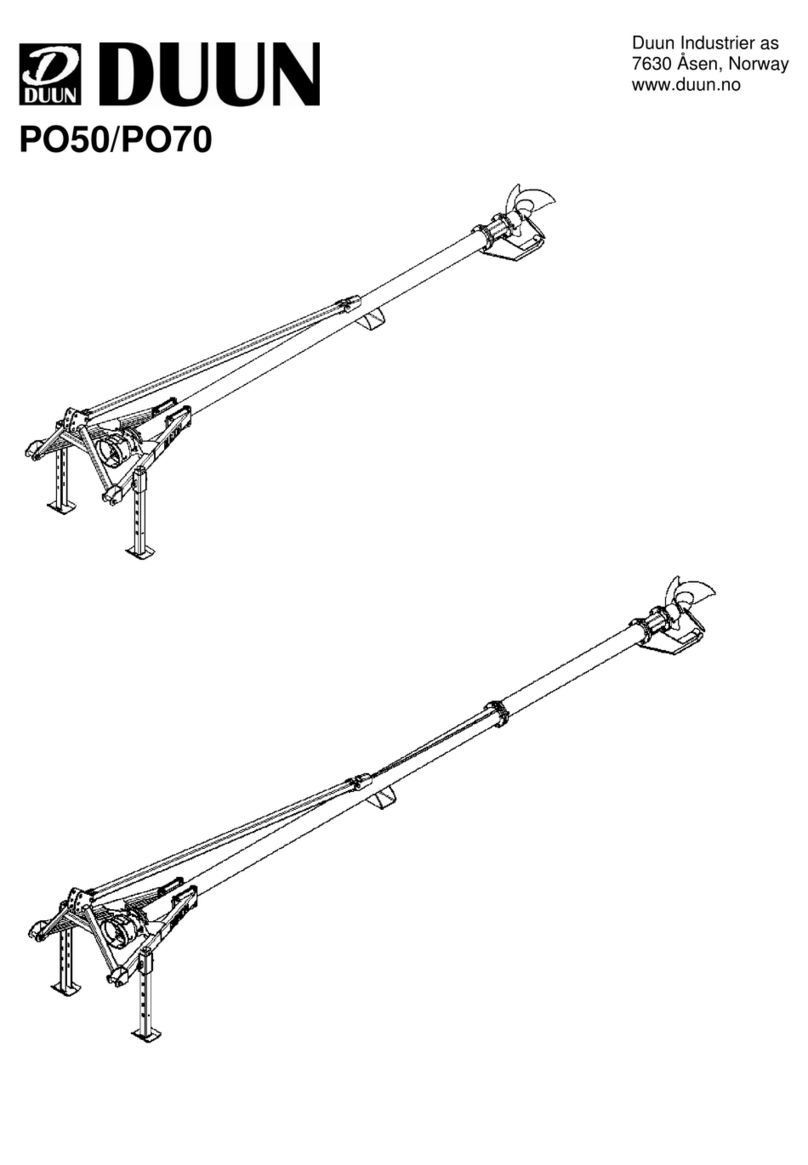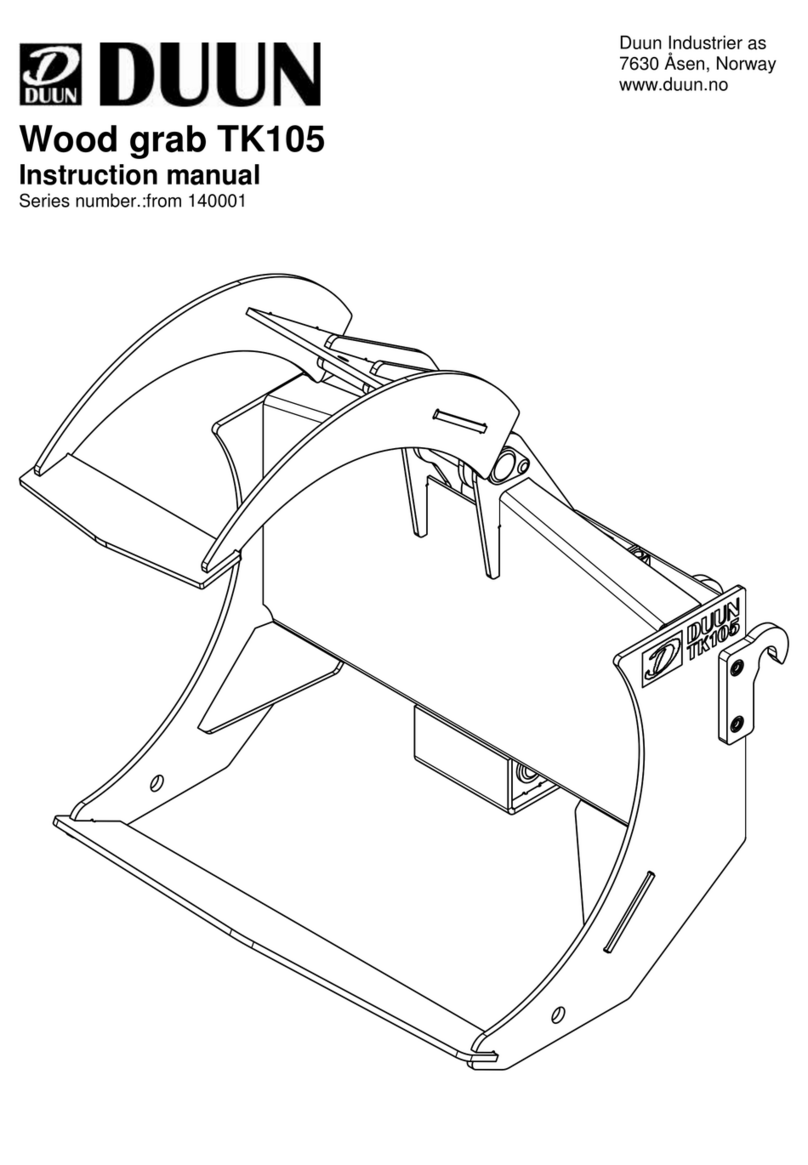
Warranty terms
Fire wood processor VM320 has a 12-month guarantee against defects in materials and
workmanship.
Parts that are not originally manufactured by Duun Industrier AS, for example shafts, bearings etc.
are subject to these suppliers’ guarantees and terms.
Parts that are considered to be wear parts are not part of the basis of the guarantee - these have
been specified in a separate survey on the bottom part of this page.
In cases where a repair is considered to be covered by the guarantee, the representative must inform
the supplier’s representatives that the repair is intended executed on the basis of the guarantee.
In this context, the following information must be recorded:
Product name
The products serial no. (see the machine identification pp. 6 and 7]
Date of sale
The product owner’s telephone no.
Dealer with address, telephone no.
In case of such a repair, the supplier is presented with a claim within 3 weeks after the repair date.
Replaced parts are to be kept until a decision has been made with reference to the claim and the
replaced parts are to be forwarded to Duun Industrier for assessment if so required.
As the employment of the product is beyond our control, we may only guarantee the quality and do
not accept liability for the product's general performance.
The guarantee liability assumes that the prescribed maintenance has been carried out.
Duun Industrier reserves the right to modify the design and specifications and/or make alterations
and improvements without notification.
What is not included by the guarantee
The guarantee does not cover economic loss because of interruptions.
The guarantee does not cover consequential loss due to defects.
The guarantee does not cover defects or damage caused by misuse and use that is not in
accordance with the instruction manuals specifications and guidelines.
The following parts and material are considered as wearing parts and are not covered by the
guarantee:
.
The chain saw bar
The saw chain
The wood splitter knives
The feeding belt
Oil filter
Hydraulic oil
Filter cartridge for hydraulic oil
Wear parts in splitting mechanism






























